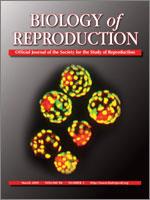Two mouse models of pelvic organ prolapse have been generated recently, both of which have null mutations in genes involved in elastic fiber synthesis and assembly (fibulin 5 and lysyl oxidase-like 1). Interestingly, although these mice exhibit elastinopathies early in life, pelvic organ prolapse does not develop until later in life. In this investigation we developed and validated a tool to quantify the severity of pelvic organ prolapse in mice, and we used this tool prospectively to study the role of fibulin 5, aging, and vaginal proteases in the development of pelvic organ prolapse. The results indicate that >90% of Fbln5−/− mice develop prolapse by 6 mo of age, even in the absence of vaginal delivery, and that increased vaginal protease activity precedes the development of prolapse.
How to translate text using browser tools
1 March 2009
Quantification of Pelvic Organ Prolapse in Mice: Vaginal Protease Activity Precedes Increased MOPQ Scores in Fibulin 5 Knockout Mice
Cecilia K. Wieslander,
David D. Rahn,
Donald D. McIntire,
Jesús F. Acevedo,
Peter G. Drewes,
Hiromi Yanagisawa,
R. Ann Word
ACCESS THE FULL ARTICLE

Biology of Reproduction
Vol. 80 • No. 3
March 2009
Vol. 80 • No. 3
March 2009
elastic fibers
female reproductive tract
matrix degradation
matrix metalloproteases
MMP2
MMP9
pelvic organ prolapse




